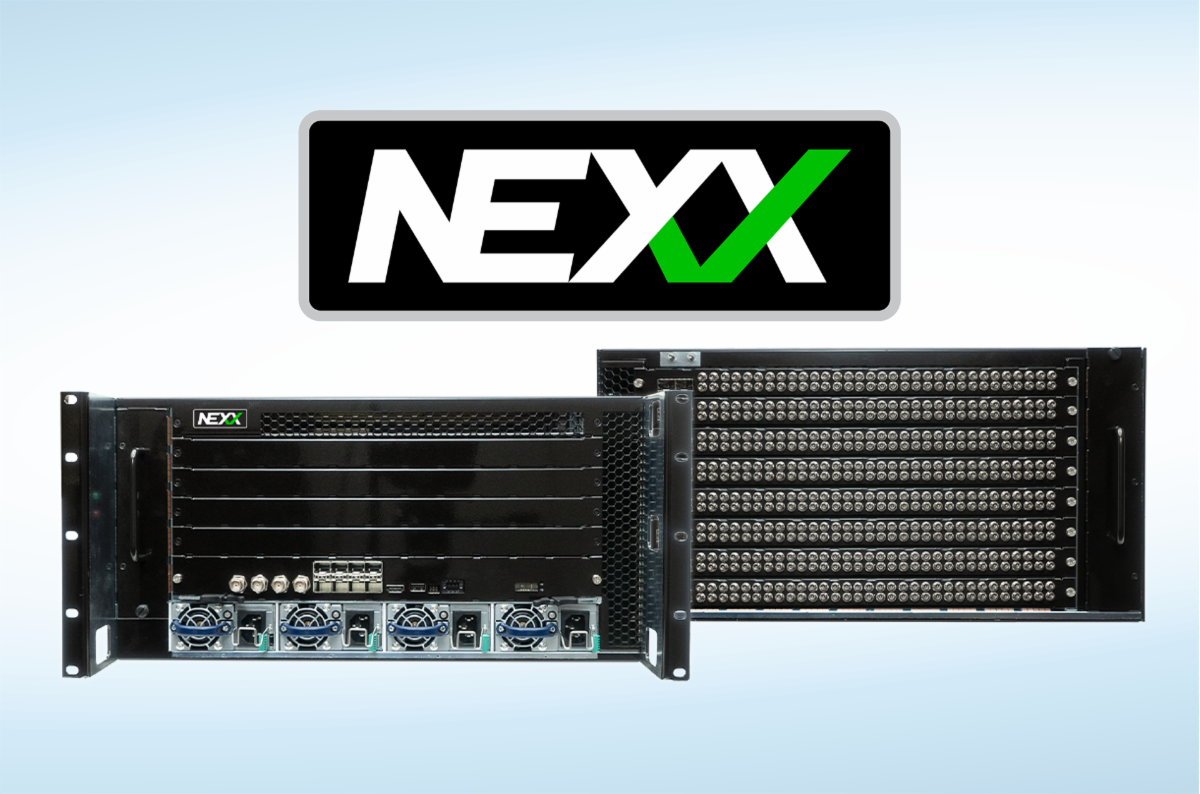SDI Lives Long and Prospers
The older choice is still often the smartest

SDI is on its way out, right? I mean, anything that’s been around for three-plus decades in the television industry must be either in a museum or just waiting for the final switch to be turned off. Right?
In an industry that has had its technology turned on its head and disposed of at astonishingly fast intervals, somehow the Serial Digital Interface has been one of the few islands in a churning sea of change. First standardized in 1989 as SMPTE 259M, SDI was created to support uncompressed standard-definition television at data rates up to 360 Mbps. It was immediately accepted in high-end products and systems, and eventually found its way down to lower-cost products—as just one example, today you can get an SDI-to-HDMI adapter for less than $40.

Not Dead Yet
Over the years, SDI was modified surprisingly quickly to adapt to changing television standards. Today, the latest version is known as 24G-SDI (SMPTE ST 2083), which supports 4K video at 120 fps and 8K video at 30 fps, using a data rate of 24 Gbps.
Is that enough? As other connectivity options push their way into television systems—and as a new crop of technology specialists with their roots in the IT world become broadcast engineering managers—will SDI’s sunset come anytime soon?
“I remember being at IBC years ago and seeing signs with the slogan ‘SDI is Dead’ or something to that effect,” said Todd Riggs, director of product management at Ross Video. “While eye-catching and a bit of marketing fun, obviously that was an exaggerated statement that has proven to be inaccurate. I don’t believe we will see the end of SDI any time soon, as it is still the dominant transport for most customers worldwide and easiest to deploy.”
Ross Video is a major manufacturer for the broadcast industry, and Riggs has a window into the company’s product planning.
“Manufacturers are still spending a lot of money in R&D to develop new and very powerful products using [SDI] as the primary transport,” he said. “There are certain workflows and system designs that will become more and more IP- or cloud-based, as they lend themselves really well to those topologies. However, I think we are going to live in a hybrid SDI/IP world for a very long time.”
The professional video industry's #1 source for news, trends and product and tech information. Sign up below.
High Comfort Level
Other manufacturers see the same thing.
“SDI still plays an essential role in providing A/V connectivity for many broadcast facilities and mobile production trucks,” said Deon LeCointe, director of networked solutions at Sony Electronics. “Although the industry is already in the midst of implementing IP and cloud technologies for various applications, there’s still a high comfort level with using SDI for ad-hoc applications like flypacks, where the simplicity of SDI allows for faster deployments with minimal configuration.”

And there are additional factors that endear SDI to video facility operators.
“When it comes to professional workflows, SDI is fast, reliable, secure and never buffers,” said Bob Caniglia, director of sales operations for the Americas at Blackmagic Design. “This is especially important in television facilities and broadcast studios where live programming means professionals can leave nothing to chance.”
Yet, we all know that SDI is not the only connection standard in the broadcaster’s toolkit.
The strongest competition probably comes from SMPTE ST 2110, which defines how professional media can be distributed over managed IP networks. The SMPTE ST 2110 standard specifies the carriage, synchronization, and description of compressed and uncompressed video streams over IP for real-time production, playout and other professional requirements.
“SDI will continue for as long as the supply chain produces the transceivers and crosspoint chips—ultimately that will be the limiting factor."
John Mailhot, Imagine Communications
Since SMPTE is the standardization body for both SDI and ST 2110, it makes sense that the two standards play well together. Yet as the use of ST 2110 grows, some in the industry see that there is nowhere for SDI to go but down. John Mailhot, CTO and director of infrastructure product management at Imagine Communications, has thought about how the end of SDI might happen.
“SDI will continue for as long as the supply chain produces the transceivers and crosspoint chips—ultimately that will be the limiting factor,” he said. “As SDI use declines over time, some of these chips may become harder to get.”
Mailhot sees ST 2110 as the technology of choice for larger facilities, especially if UHD or HDR is in the requirements.
“The ability to scale to very large, and to integrate best-of-breed offerings across the spectrum of vendors makes ST 2110 a winner,” he said. “[Where there is] a need to integrate some SDI equipment, our Selenio Network Processor has a high-density synchronizing gateway application that allows customers to integrate SDI and IP. This provides a path into IP at a pace that suits the customer’s overall system strategy.”
Yet, not everyone is positive that a future of ST 2110 and IP connectivity is coming quickly.
It Simply Works
“SDI is definitely NOT winding down,” said Joshua Vanarnhem, product manager for routers at Evertz. “We are seeing an increase in SDI router sales, and we are still actively developing SDI solutions and products to answer the needs of our industry. For example, our latest SDI router—the NEXX—leverages the latest technology and provides a full-featured routing platform to meet the demands and workflows of an enterprise-class routing system. Yet it still maintains the simplicity of SDI, where customers can just plug in their SDI input or output and are good to go.”

Vanarnhem pointed out the benefit of SDI that makes it still highly useful in a world where technology specialists so often sing the praises of network topologies: SDI is simple.
“Simple is a great word to explain SDI, as it just simply works,” he said. “Simply plug one wire for one signal; simply patch in a waveform monitor to troubleshoot, and simply be able to meet all the industry’s functional workflow needs. SDI can simply support SD, HD and all the way up to 12G for UHD. HDR? No problem.”
What we can make of this is that SDI is still here, it still works, and it works at the highest-quality signal levels used in professional facilities today. Manufacturers are not only still making SDI products, they are designing new SDI products to meet the growing and changing demands of modern television production and distribution. That a 34-year-old technology is slugging it out and still relevant is impressive—it speaks to the good work done by SMPTE and its technology groups.
So many things have disappeared since SDI was first standardized: SD broadcasting, CRT displays, cameras with tubes, robotic devices that used a grabber arm to pull a videotape from a rack and feed it into a player. And remember necessities like timebase correctors, proc amps and delay lines? They have all vanished into the cloud of modern video production and distribution… which is often described as “in the cloud.”
However, SDI is still with us, modified along the way to keep pace with our rapidly improving quality and production standards. It would be interesting to know if the product that was once marketed using the slogan “SDI is Dead” is still being made. Wouldn’t it be ironic if that product struggled and died, while SDI is still meeting the needs of broadcasters?
Bob Kovacs is the former Technology Editor for TV Tech and editor of Government Video. He is a long-time video engineer and writer, who now works as a video producer for a government agency. In 2020, Kovacs won several awards as the editor and co-producer of the short film "Rendezvous."

